Lenovo ThinkSystem ST550 Internal Overview
With the side panel off let us take a look inside the Lenovo ThinkSystem ST550.
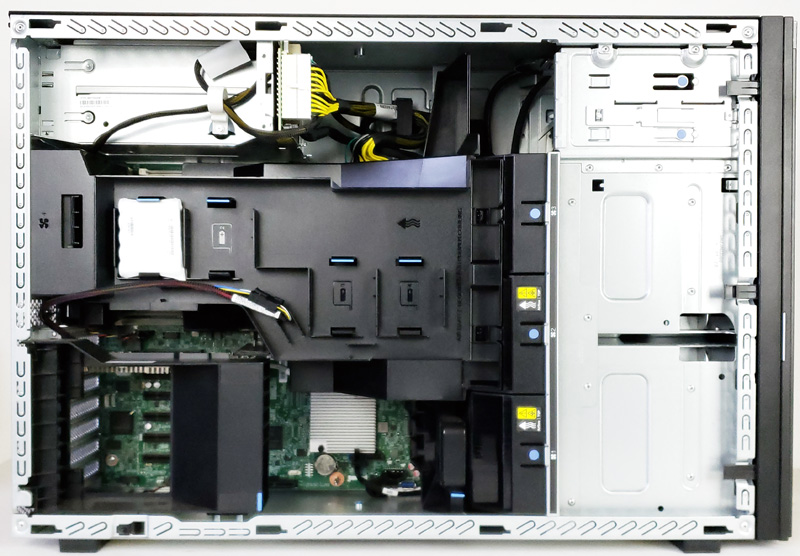
The ThinkSystem ST550 uses a sizeable cooling shroud to direct airflow from two cooling fans at the mid-plane across the passive CPU heat sinks. A third fan is directed to the PCIe expansion cards. Each of the cooling fans at the mid-plane is hot-swappable. A forth hot-swappable fan located at the back of the server under the cooling shroud aids pulling warm air out the back of the server.
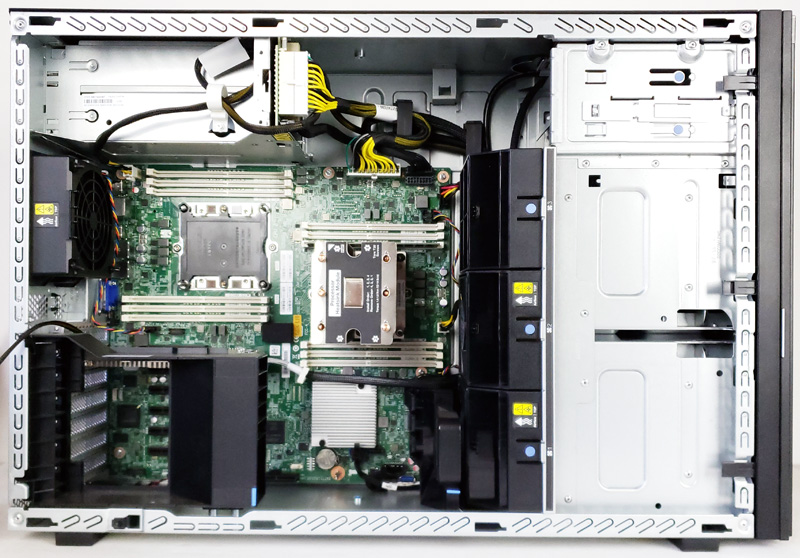
After removing the cooling shroud, we have easy access to the motherboard area.
Looking at a close up of the processor heat sinks which do not have fans attached, cooling is provided by the main fan assembly at the midplane and directed through the heat sinks by the air shroud. This the leading practice for cooling server processors.
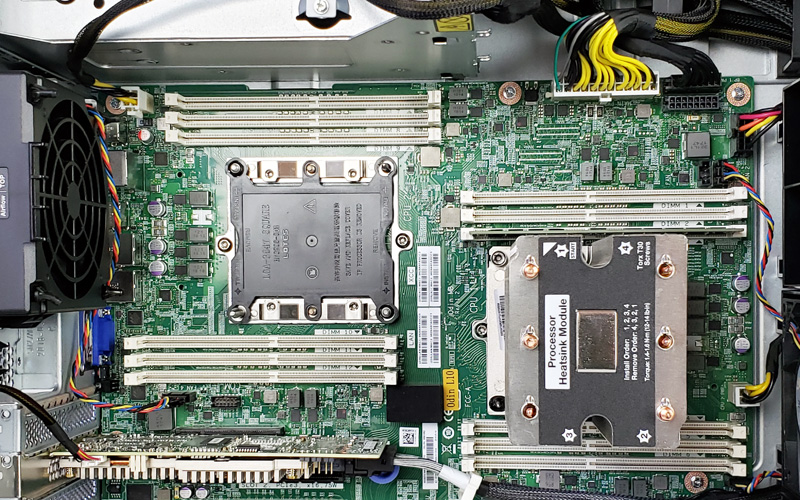
With a closer look at the CPU socket area, we see six DDR4 DIMM slots per CPU. This means that the system supports a maximum of one DIMM per channel. Unlike previous generation Intel Xeon E5 systems, the new Intel Xeon Scalable platform offers 50% more memory channels for additional memory bandwidth. Having more memory channels also means more configuration flexibility.
The six PCIe expansion slots can be accessed only when both CPUs are installed. Two of the PCIe x16 slots are blocked by the first CPU’s DIMM sockets which is common in this form factor.
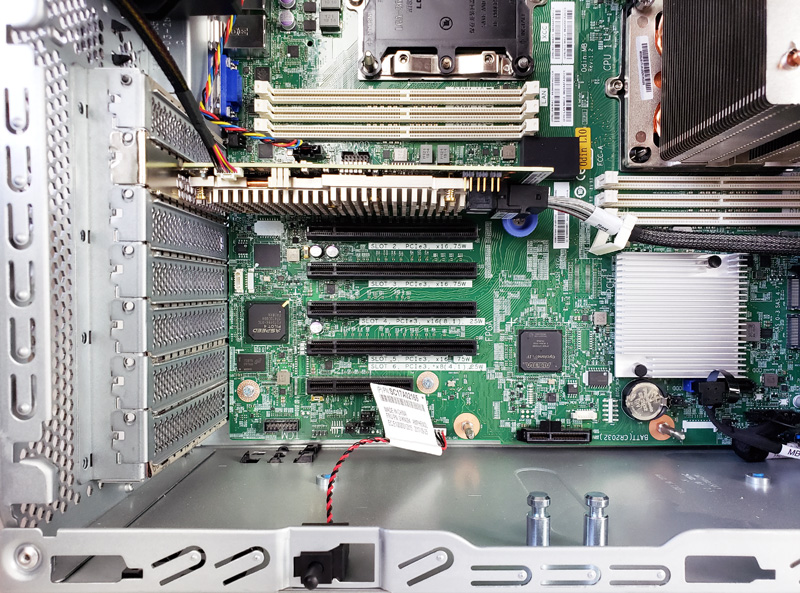
Our ST550 arrived with a ThinkStation RAID 930-8i 2GB Flash PCIe 12Gb adapter which provides SAS connectivity to the front panel storage.
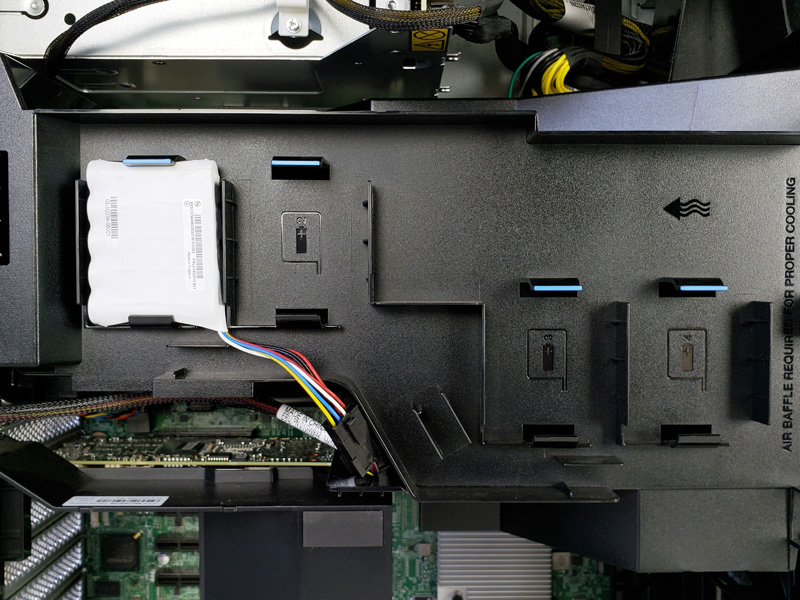
The Lenovo ThinkSystem ST550 provides locations for four battery packs for storage HBAs. In many white box systems, mounting batteries and capacitors for RAID controllers can be troublesome. Lenovo has a leading solution here.
Before getting into performance and power consumption testing let us take a look at XClarity Management.




Do you have any idle/load power usage figures for the server?
Handsome looking case and typical for the ThinkSystem, the IBM tradition of always being professional upon first impression, continuing under Lenovo, unlike the lack of identity continuity projected with less traditional mindset, style de jure, Dell and HP.
As for the hardware, it would be nice to see the inside of the case to examine if the same level of attention to detail that is being applied to case form is being equally applied to chassis function, e.g. thermal and harness management… along with how peripheral boards are secured, to easy of extraction and cleaning.
Since none of the hot swap bays can be rotated 90 degrees and not a common case feature, this Lenovo computer case, irrespective of configuration would not be my first choice for any highly populated vertical (upright) application since all the drives would be situated in a less optimum, horizontal arrangement.
If I were to configure such server for horizontal (rack mount) use would provide and not shown, 1 slim DVD along with 16 hot swap, 12G compliant drive bays compartmentalized as follows, (4) generously spaced 3.5″ bays to accommodate (1) 3.5″ and hot, 7,200 RPM RAID 10 Volume for low duty cycle archiving, and (12) SFF 2.5″ bays to accommodate a less hot but still warm, 2.5″ SSDs arranged as (3) high duty cycle RAID 10 Volumes, e.g. OS, Apps, Data.
I did not notice the arrows at the bottom of the article leading to more content. I have seen the inside. Thanks.
Excellent article! Thank you for taking the time to write it. Do you have any numbers on the noise the server makes? If possible compared to its HP counterparts. We don’t have a server room and are worried a tower server could be too noisy.